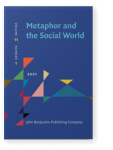Vol. 11:1 (2021) ► pp.143–170
Metaphors in Polish, English, Russian, and French perfumery discourse
A comparative study
This paper examines metaphors in perfume reviews in four languages, namely Polish, English, Russian, and French. Some typical features of the perfumery discourse, similar across the four languages, have been highlighted, such as clustering, extension, and mixing metaphors. The authors also discuss the most typical schemata used in the conceptualization of perfumes. Although the analyzed texts exhibit a certain similarity, a statistical analysis of the reviews identifies some interesting discrepancies between the languages, that is: unequal distribution of metaphorical types, preferences in usage of perceptual and non-perceptual source frames, and variance in perfume conceptualization (perfume is a woman vs. perfume is a man).
Article outline
- 1.Introduction
- 2.Method
- 2.1Preliminaries
- 2.2Metaphor identification procedure
- 2.3Metaphor structure: Sources and targets
- 2.4Typology of verbal metaphors
- 2.4.1Typical metaphors
- 2.4.2Mixed metaphors
- 2.4.3Narrative metaphors
- 3.Results of the analysis
- 3.1Annotators’ inter-agreement
- 3.2Tendencies in the use of metaphorical expressions across languages
- 3.3Patterns of source frames activation across languages
- 3.4Overall characteristics of perfumery discourse
- 3.5Contextual factors influencing metaphor production
- 3.6Creative use of metaphors exploiting conventional schemata
- 3.7Cross-linguistic variation in perfumery discourse
- 4.Conclusion
- Notes
-
References
